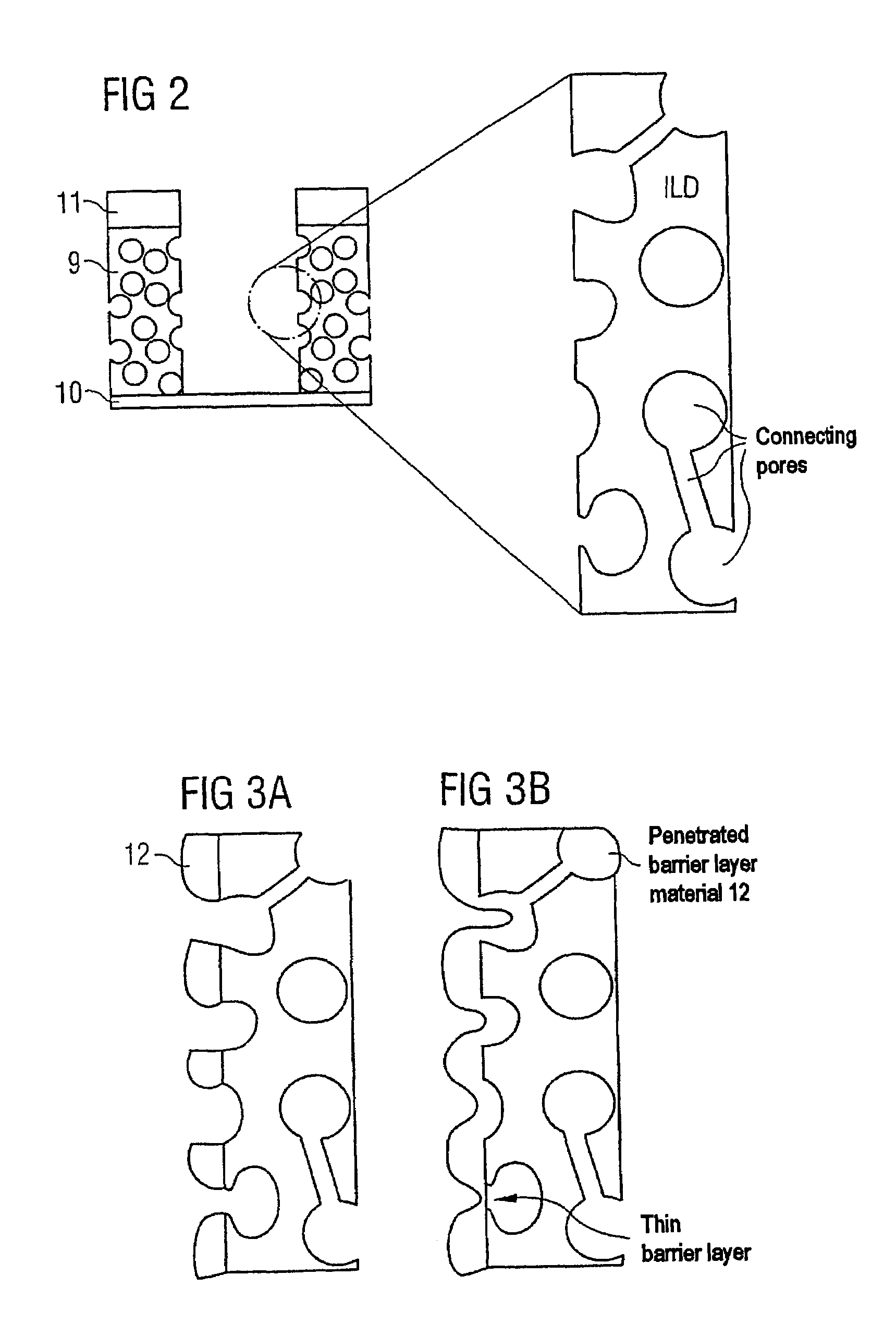Polymer for sealing porous materials during chip production
a technology of porous materials and polymers, which is applied in the direction of other chemical processes, semiconductor/solid-state device details, chemistry apparatus and processes, etc., can solve the problems of introducing materials with intrinsic porosity, adverse effects or even destruction of the actual function of interlayer dielectrics (ilds), and exposed to contaminating chemical substances without any protection, etc., to reduce the dimensions of the recess
- Summary
- Abstract
- Description
- Claims
- Application Information
AI Technical Summary
Benefits of technology
Problems solved by technology
Method used
Image
Examples
example 1
[0118]Patterned wafers, i.e. wafers with uncovered walls of a low-k dielectric (carbon-doped silicon) were immersed for 1 h in a 10% by weight solution of the polymer according to the invention in cyclohexane. Alternatively, the solution can also be applied by spin-on methods. Group A used to produce the polymer was in each case methylene dimethylmethoxysilane, i.e. group A was introduced into the polymer chain, by way of example, via the compound (chloromethyl)dimethylmethoxysilane, with the result that group A was linked to the main polymer chain by a methylene group. The following radicals were respectively used as group B, with R3 for linking to the polymer main chain in each case being a methylene group.
[0119]
[0120]If group B was a benzotriazole radical, R1 was a methyl group at the ortho position with respect to the carbon atom which is linked to the N—R3 group. The polymer main chain used was polypropylene.
[0121]Groups A and B were present in approximately equal ratios in the...
example 2
[0126]The above method was repeated up to and including the removal of the solvent in the furnace.
[0127]Then, a non-metallic thin SiC layer (a so-called liner layer with a thickness of 5 nm) was applied to the polymer monolayer deposited in this way by means of ALCVD or PVD.
[0128]The base of the recesses was etched clear by means of a short, targeted etching step (CF4 / H2 etching plasma). The polymer layer and the liner layer were retained at the side walls.
[0129]Then, a thin Ta layer with a thickness of 5 nm was applied by means of a PVD process as a metallic barrier layer.
[0130]As in Example 1, electrical evaluation of the fully processed wafers in each case resulted in excellent properties of the wafers produced in this way, i.e. it was not possible to determine any deterioration in the interlayer dielectric properties. Only in the case of the compounds with a benzotriazole radical as group B were occasional defects recorded once again.
[0131]Corresponding results were also obtaine...
example 3
[0132]Furthermore, to determine the porosities, the abovementioned compounds were applied to an Si wafer coated with a porous low-k material so as to coat the wafer with the polymer compounds over the entire surface. Ellipsometric porosity measurements using toluene in each case showed that the applied layers had no porosity. Only in the case of the benzotriazole derivates was a slight porosity determined from time to time.
PUM
| Property | Measurement | Unit |
|---|---|---|
| molecular weight | aaaaa | aaaaa |
| molecular weight | aaaaa | aaaaa |
| temperatures | aaaaa | aaaaa |
Abstract
Description
Claims
Application Information
 Login to View More
Login to View More - R&D
- Intellectual Property
- Life Sciences
- Materials
- Tech Scout
- Unparalleled Data Quality
- Higher Quality Content
- 60% Fewer Hallucinations
Browse by: Latest US Patents, China's latest patents, Technical Efficacy Thesaurus, Application Domain, Technology Topic, Popular Technical Reports.
© 2025 PatSnap. All rights reserved.Legal|Privacy policy|Modern Slavery Act Transparency Statement|Sitemap|About US| Contact US: help@patsnap.com



